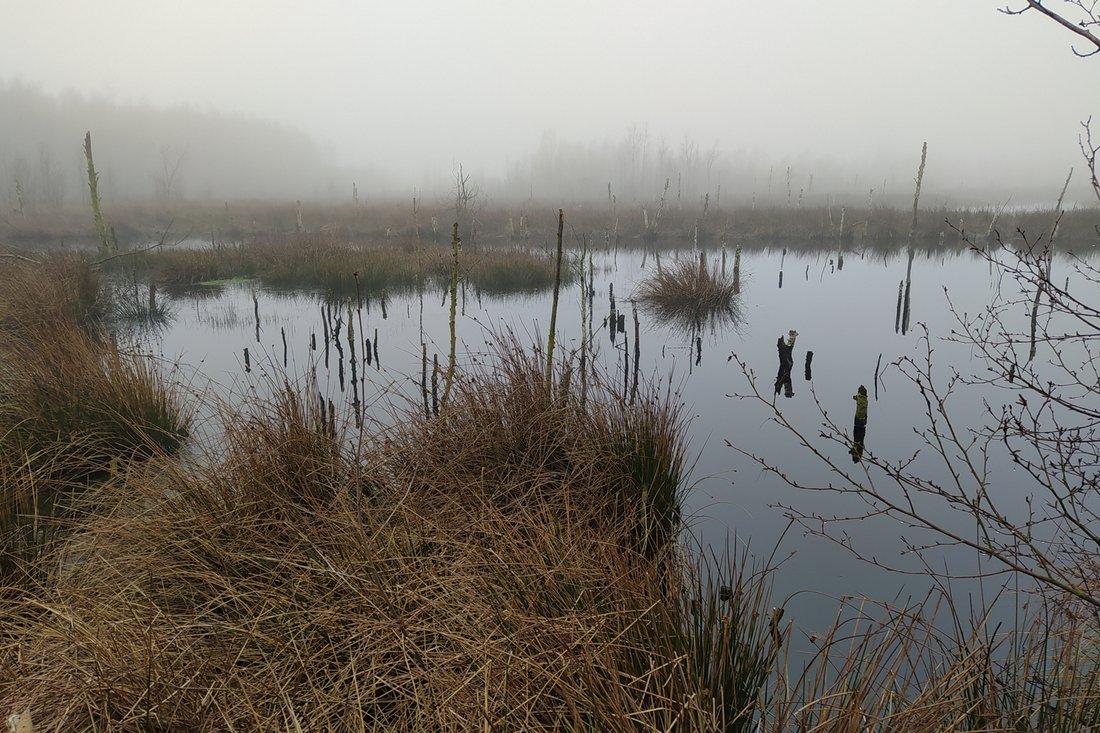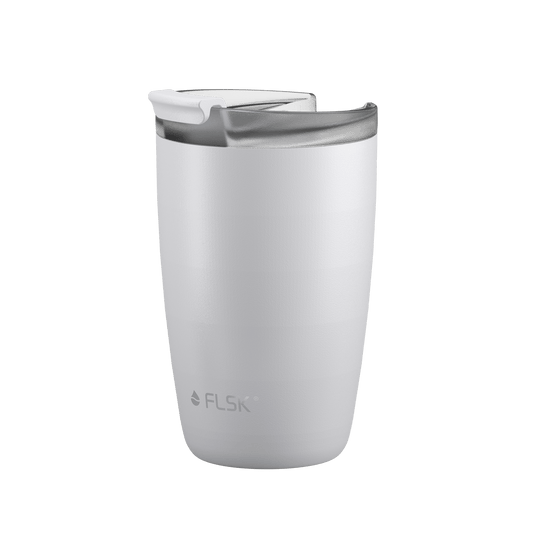FLSK x German Wildlife Foundation: This is what is happening in the Aschhorner Moor

Since 2023, FLSK has been supporting the projects of the German Wildlife Foundation in the Aschhorner Moor. The donations have already achieved a lot for the valuable moor wilderness: The foundation has set up moor water measurement points and will establish the development plan this year, detailing the necessary measures in the moor. Read the exciting project report here!
Exploitation of the Moor Habitat
In the past, moors were often considered barren, useless land – nothing more than swampy obstacles to agricultural expansion. So they were drained to make way for farmland. Additionally, peat was extracted from the moor soil to obtain fuel. Today it is used as a horticultural substrate. The moor must also be drained for peat extraction.
What was long overlooked: moor soils contain large amounts of organic matter. When moors are drained, oxygen reaches the peat. The carbon begins to oxidize and is released as CO2. This releases greenhouse gases into the atmosphere.
The Aschhorner Moor: Carbon Storage and Habitat
Fortunately, attitudes towards moors have changed significantly in recent years. With a better understanding of their role in the global carbon cycle, moors are now considered important ecosystems that must be protected and even restored.
This is also the case in the Aschhorner Moor in the district of Stade. In 2022, the German Wildlife Foundation acquired the 471-hectare former raised bog. It is now being gradually restored to its original state. Areas where peat extraction has long been completed are being re-wetted. Many animal and plant species are returning.

Sponsored by FLSK: Moor Water Measurement Points
To ensure that carbon is securely stored in the moor, the soil must be sufficiently wet. This is monitored with moor water measurement points.
-
Last year we funded the planning of ten moor water measurement points. This allows the German Wildlife Foundation to detect and, if possible, rectify water balance deficits at an early stage.
-
In addition, the level probes were ordered. The measurement points consist of a sturdy plastic pipe, which is fixed in the ground with an iron rod. The probes are located in the pipe. The probes measure the incoming water.
-
The installation of the measurement points is planned for 2024. The commissioned company was already on site to set up the measurement points.
What's in the Development Plan?
The development plan regulates the protection of the moor for the next ten years. Various investigations will be carried out this summer. The specially commissioned engineering office will closely examine the areas.
-
For example, the ditch system, which regulates drainage, will be examined. This is necessary so that neighboring agricultural areas are not affected and at the same time as much water as possible remains in the moor.
-
In addition, the re-wetting of various grassland areas is planned so that the peat soil becomes wet again, stopping the decomposition of peat and the release of CO2.
-
The engineering office will also examine whether it makes sense to install additional moor water measurement points in the Aschhorner Moor.
We are pleased with the progress in protecting the moor and will keep you updated here in the magazine!
*Image sources: Deutsche Wildtier Stiftung/SL (8); Deutsche Wildtier Stiftung/SL (1)
- - 10 %
- Engraveable.
FLSK coffee cup
350 ml · white
- - 10 %
- Engraveable.


FLSK drinking bottle
500 ml · stone
- - 30 %
- Engraveable.





